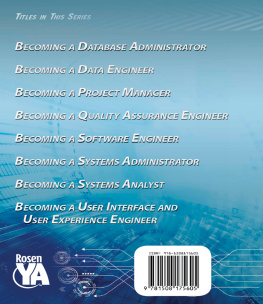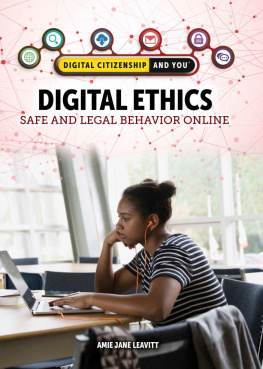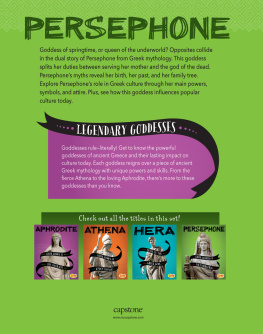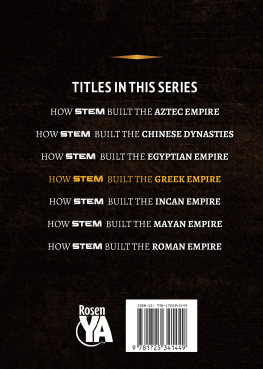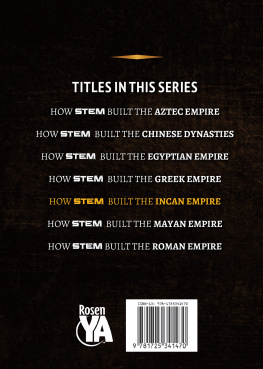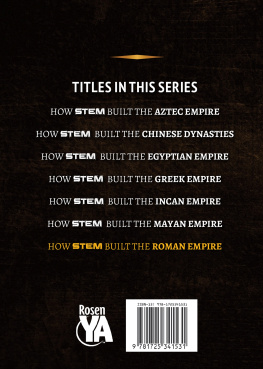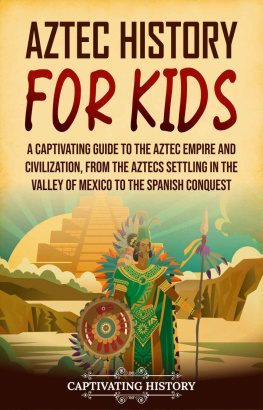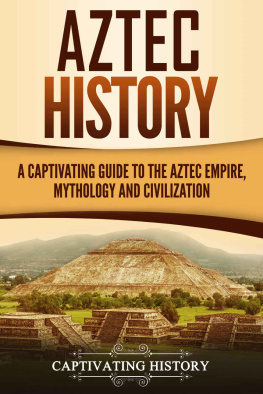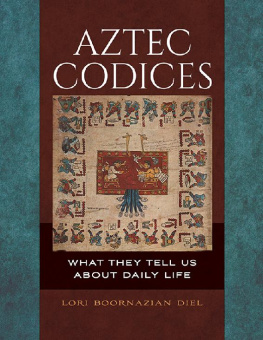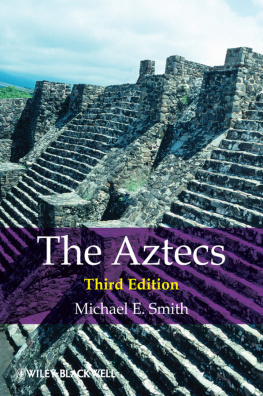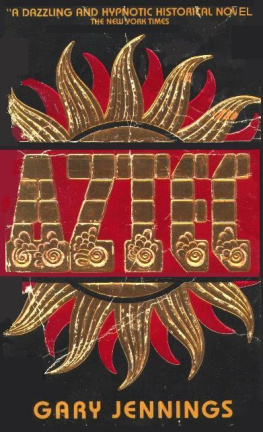
Published in 2020 by The Rosen Publishing Group, Inc.
29 East 21st Street, New York, NY 10010
Copyright 2020 by The Rosen Publishing Group, Inc.
First Edition
All rights reserved. No part of this book may be reproduced in any form without permission in writing from the publisher, except by a reviewer.
Library of Congress Cataloging-in-Publication Data
Names: Leavitt, Amie Jane, author.
Title: How STEM built the Aztec Empire / Amie Jane Leavitt. Description: First edition. | New York: Rosen Publishing, 2020. | Series: How STEM built empires | Audience: Grades: 7 to 12. | Includes bibliographical references and index. Identifiers: LCCN 2019008454| ISBN 9781725341357 (library bound) | ISBN 9781725341340 (pbk.)
Subjects: LCSH: ScienceMexicoMexico CityHistoryTo 1500Juvenile literature. | AztecsMexicoMexico City HistoryJuvenile literature. | TechnologyMexicoMexico CityHistoryTo 1500Juvenile literature. | Engineering MexicoMexico CityHistoryTo 1500Juvenile literature.
| MathematicsMexicoMexico CityHistoryTo 1500 Juvenile literature.
Classification: LCC Q127.M4 L43 2020 | DDC 303.48/30972530902dc23
LC record available at https://lccn.loc.gov/2019008454
Manufactured in the United States of America
On the cover: One of the empires most iconic artifacts, the Aztec Sun Stone is displayed in Mexico City.
CONTENTS
INTRODUCTION
T he year was 1978 and a team of utility workers had just finished digging in the center of Mexico City. Not too far underneath the city streets, they uncovered something unexpected: a massive monolith.
After dusting off the stone artwork, they discovered odd carvings on it. The relief showed the image of a woman with small bells by her face. She was not wearing any clothing and her body was dismembered and decapitated. The image was likely strange to those who did not know what it represented, but Aztec experts knew exactly whom it portrayed: the famous Aztec moon goddess Coyolxauhqui, whose name means bells on her face. This goddess was strongly connected to the Aztecs most important pyramid, the Templo Mayoror Great Templethrough one of the cultures most noted legends.
Most of the Great Temple had been dismantled by the Spanish conquistadores when they conquered the Aztec capital of Tenochtitln in 1521. The massive stones from the temple had been used to construct the cathedral and other important colonial structures in Mexico City. However, the foundations and lower parts of the temple had always been suspected to be somewhere nearby. Now, this monolith revealed the precise location of its base.
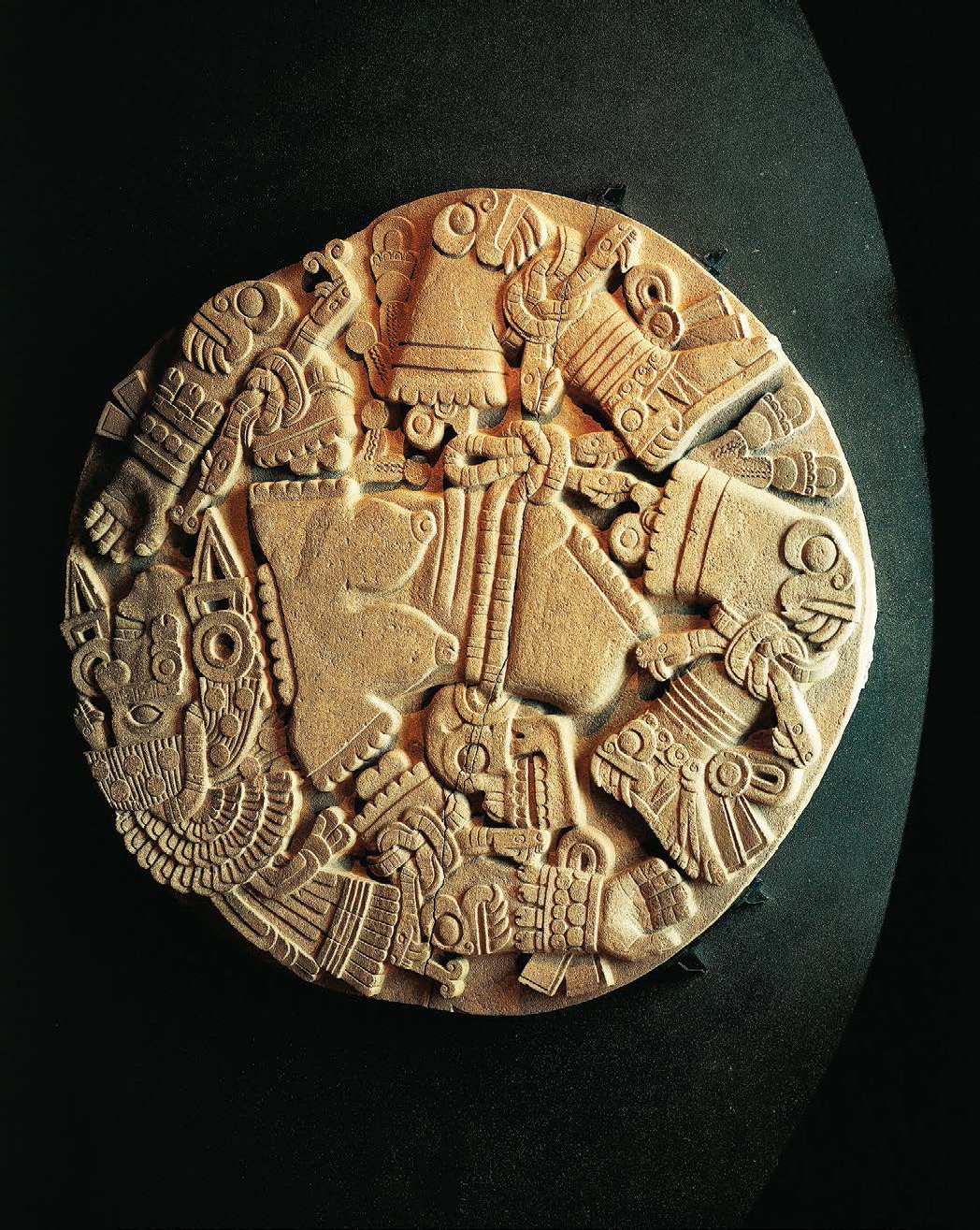
This circular stone monolith represents an Aztec legend about Coyolxauhqui, the Aztec moon goddess. It was found in Mexico City in 1978 and has become a symbol of the Aztec empire.
Because of the important nature of this discovery, the Mexican president, Jos Lpez Portillo, immediately demanded that all utility and construction work stop in the area. Archaeologists rushed to the scene with tools in hand; they were charged by the president to uncover whatever they could of the ancient temple. Teams of archaeologists, under the lead of Eduardo Matos Montezuma, went right to work.
During the decades since the original discovery, large sections of the Templo Mayor and thousands of artifacts have been uncovered in the heart of Mexico City. As the archaeologists have dug deeper over the years, they have been able to peel back the layers of time and determine that the temple was not built all at once, but rather over many generations. The first temple was constructed in the early 1400s and the last was constructed sometime in the first decade of the 1500s. As subsequent generations decided to improve or enlarge the temple, they just built a brand-new temple right on top of and around the old one. This gave the new structure a larger footprint and a higher rise than the previous structures.
The archaeological evidence of Tenochtitln is not only impressive from a historical perspective, it is also remarkable from a STEM (science, technology, engineering, and mathematics) standpoint. After all, it reveals one overwhelming fact about the Aztec builders: they were part of a highly advanced civilization that utilized countless STEM practices in the construction of their metropolis. This fact is made evident by the impressive structures, artwork, and artifacts that this long-lost people left behind deep underneath present-day Mexico City. The advanced STEM skills used to build one of the grandest cities in the world is an amazing achievement considering that the Aztec society existed more than five hundred years ago.
CHAPTER ONE

BIRTH OF AN EMPIRE
W hen Hernn Corts and his men arrived in the New World in 1519, the Aztecs controlled the bulk of 80,000 square miles (207,000 square kilometers) that makes up present-day central Mexico. The reach of Aztec society stretched from the Gulf of Mexico in the east to the Pacific Ocean in the west and from the northern and southern borders of present-day Mexico.
This truly was the height of the Aztec Empire, with a gleaming, organized capital city, a highly developed public works system, and an efficient agricultural structure. It also had a sizeable population. Keep in mind that the largest city in Spain at that time was Seville, which had a population of about 30,000. The city of Tenochtitln had an estimated 200,000 to 250,000 inhabitants, making it the third-largest city in the world at that time, behind Constantinople (present-day Istanbul), Turkey, and Paris, France. The overall Aztec Empire included about 5 million people.
FROM SIMPLE BEGINNINGS TO MYSTIC VISIONS
However, the Aztecs had not always been a major force in Mesoamerica. Their beginnings were much simpler. Historians believe that the Aztecs (who called themselves the Mexica) were most likely a nomadic tribe of hunter-gatherers from the deserts of northern Mexico. According to Aztec legends, they hailed from a place called Aztlan, meaning the White Land, and arrived in the more fertile lands of Mesoamerica sometime around the early thirteenth century. They were not the first people to dwell in this landthere were many tribes of peoples already living here in small tribal communities and city-states. There were also many deserted cities lying in ruins leftover from ancient civilizations.

This manuscript page is from Diego Durans book History of Indians.This illustration shows Corts arriving on horseback and being welcomed by the Aztecs.
AZTEC RECORDS
Most of Aztec history was passed down in oral traditions in the Aztecs native language: Nahuatl. However, they did also have a collection of records that were written in ideographs. When the Spanish conquered the Aztecs in 1521, though, the conquistadores destroyed many of the Aztec records because they felt that they contained heretical teachings.
In the decades that followed this conquest, Spanish leaders tasked the Aztec priests and artisans with creating a series of codices that documented important information about their empire. There are about five hundred of these tomes in existence today, and they are known as the Aztec codices. Some of the most noted works include the
Next page

